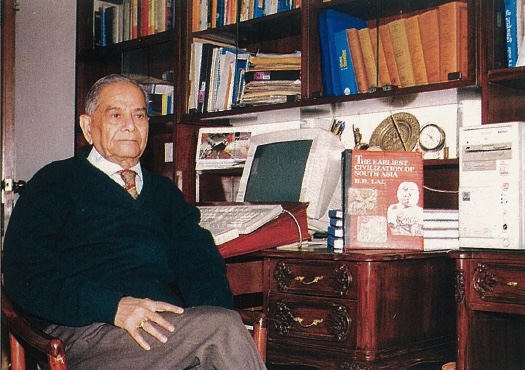Perhaps he saw it coming. in june The Indian Ministry for Human Resource Development replaced 18 Marxist historians of the Indian Council of Historical Research (whose terms were up) with scholars who support the existence of a Rama temple in Ayodhya. Councilman Professor B. B. Lal was attacked by those historians and their compatriots. Lal’s term was also up, but he was reappointed. A bit surprised, Lal was still prepared to calmly and fully respond. Here is why, and how.
Leftists in India are commonly Hindu-bashing and attempt to distort history. They were understandably upset at losing one of their greatest sources of government patronage and academic power in India. After the ICHR chair-shuffling was over, Lal, former Director General of the Archaeological Survey of India (ASI), was condemned by leftists as “communal” because he supports the view that a Rama temple once existed at the site of Babri Masjid, Ayodhya, and that the Aryan invasion theory is a myth.
A negative editorial in The Hindu newspaper titled “Tampering with History” suggested a “disturbing effort to undermine the scientific temper that must preempt historical inquiry.” The editor said Lal faltered in three ways: 1) that Lal’s earlier conclusion said there was no evidence to suggest “historicity” of the Ramayana; 2) that Lal refuses to hand over field diaries to the ASI and open them to fellow archaeologists; and 3) Professor Lal claims to possess “clinching” evidence the Babri Masjid mosque stood on the ruins of a Hindu temple, but doesn’t substantiate this claim with excavation facts.
Within ten days Lal issued a full rebuttal letter. “To the first allegation,” he wrote, “let me make it absolutely clear that at no point in time did I ever say there was no evidence about the ‘historicity’ of the Ramayana. In 1988 the ICHR organized a seminar in Delhi at which I presented a 60-page paper entitled Historicity of the Mahabharata and Ramayana: What Has Archaeology to Say? Finding in it something counter to their views, the (leftist) ICHR authorities at the time withheld publication. In 1993 came my first report of the ‘Archaeology of Ramayana Sites’ project. In it I categorically restated, ‘Combined evidence from five sites excavated under the project shows there did exist a historical basis for the Ramayana.'”
To the allegation that he is withholding documents from the Archaeological Survey of India, Lal writes, “The Survey is already the custodian of all the documents, including the field diaries, plans, photos and the entire excavated material.” To the third allegation, Lal gives a more detailed response, due to its importance to the whole country (thousands died in 1992 communal riots over demolition of the Babri Masjid).
Excavations in Ayodhya were originally undertaken to compare Ayodhya’s antiquity with other sites in the Ramayana story. But as work progressed, they took on deeper meaning. A trench dug next to the Masjid boundary revealed parallel rows of pillar-foundations lying near the mosque. Affixed to the piers of the Masjid were pillar-shafts carved with Hindu Gods and Goddesses. Deity-carvings on pillars used as foundation material in a mosque? Lal couldn’t help but wonder if this meant a Hindu temple once stood on this same site.
Lal knew that real confirmation required excavation in the Masjid floor area, but other historians resisted it. That obstacle fell with the now famous and unfortunate Masjid demolition in 1992. Within the walls torn down by the mob much archaeological material was found. Especially crucial were three stone inscriptions, the largest (see photo left) of which Professor Ajaya Mitra Shastri of Nagpur University translated. His report says, “The inscription was evidently put up on the temple wall, the construction of which is recorded in the inscribed text. Line 15, for example, tells us that a beautiful temple of Vishnu-Hari, ‘built with heaps of stone’ and ‘beautified with a golden spire unparalleled by any other temple built by earlier kings, was constructed. This temple was built in the city of Ayodhya.'” This inscription speaks for itself. It’s clear a twelfth-century temple was destroyed and some of its parts incorporated by Muslims in the mosque.
So what happens next? Why is Lal’s response to The Hindu’s editorial crucial? Before the Majid was demolished, a debate raged as to whether the mosque was sitting on the ruins of a Rama temple. Now, with overwhelming evidence that it was, millions of Hindus want to know when the temple will be re-constructed (a project already under way, sponsored by the Vishwa Hindu Parishad), and how it can be done without offending Muslims. Further violence must be avoided.
